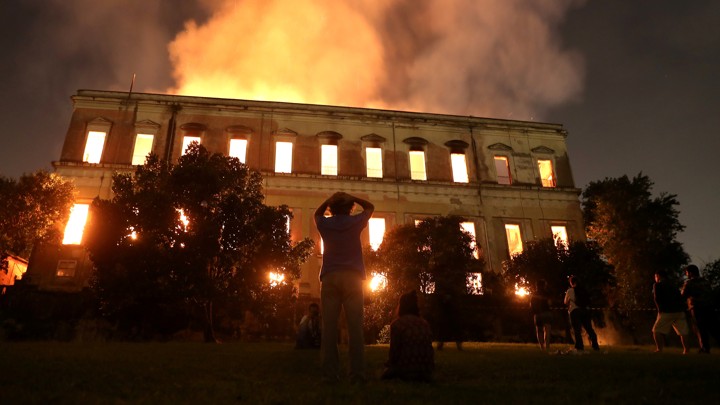
Fire at Brazil's National Museum brings more than just physical loss
On September 2, the world lost the National Museum of Brazil, which housed more than 20 million artifacts.
For 200 years, the National Museum of Brazil (Museu Nacional) in the city of Rio de Janeiro stood tall and proud. Founded in 1818 and housing more than 20 million artifacts inside, it was the largest natural history museum in Latin America.
On Sept. 2, about 90 percent of the historically and culturally significant artifacts that had been staples of the museum’s identity went up in flames as a devastating fire ripped through the museum overnight.
Among the items damaged include "Luzia," a 12,000-year-old human skull and one of the oldest human fossils ever discovered in the Americas. The fire also destroyed countless dinosaur bones, ancient mummies, one-of-a-kind recordings and other artifacts.
It’s a sad and unfortunate culmination of problems regarding the museum's maintenance efforts as the museum had not received the necessary funds to maintain itself for several years. In 2015, it was temporarily closed when the cleaning and security staff could no longer be paid. The institution had to rely on crowdfunding and by this year, the museum’s maintenance budget had been depleted considerably.
“For many years, we fought with different governments to get adequate resources to preserve what is now completely destroyed,” Luiz Fernando Dias Duarte, the museum’s deputy director, said after the fire.
The museum also didn't have a working sprinkler system, which proved to be catastrophic in efforts to save the museum and much of its collection during the fire.
The physical loss of the irreplaceable objects doesn’t begin to scratch the surface of what was truly lost in the blaze. The disaster also stole hundreds of years of research and knowledge of Brazilian history.
RELATED CONTENT
In most cities, museums are known for being popular attractions for locals and tourists. However, most importantly, a museum is a place for preserving and learning history through public viewing. Researchers and historians spend hours, days, years studying and learning from the huge collections of artifacts housed inside museums. These collections often have a historical and cultural value that that cannot be replaced without the visual component, now lost in Rio due to the fire.
What makes things even worse?
This fire likely could have been prevented, had the monetary funds needed to repair the museum been provided. It's impressive that the museum was able to stand for about 200 years with so little repairs during that time, but the lack of upkeep has cost Brazilian residents, researchers and anyone else the ability to learn from this plethora of history.
The building can eventually be replaced and the remaining number of artifacts may still be available for use, but the items lost are lost forever. The opportunity to learn from them no longer exists. That's the real devastating blow this fire caused.
It’s especially true when it likely could have been avoided.











LEAVE A COMMENT: